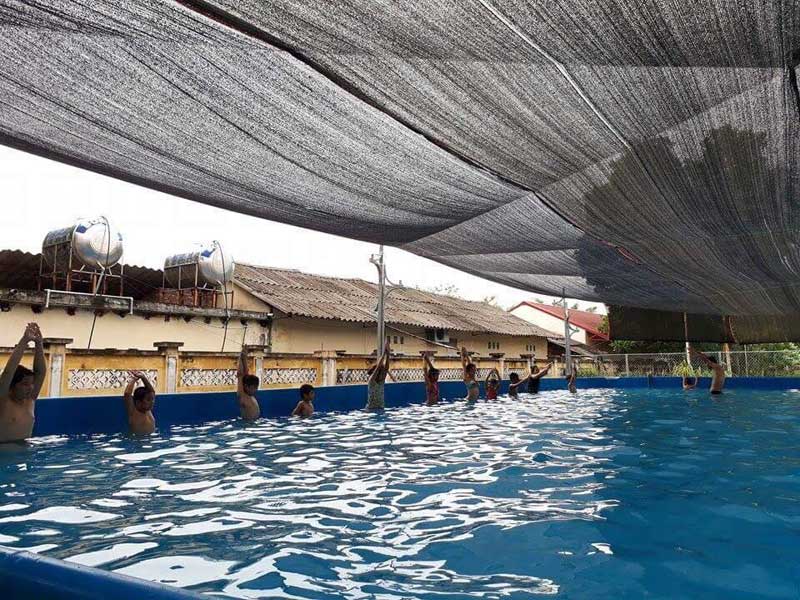
(HBO) – Summer vacation is a time when children temporarily leave their studying to enjoy, visit and have picnics. However, this is also the time for child drowning cases which made many families anxious.

In summer, many parents have registered
swimming lessons for their children at Provincial Youth Center.
To prevent from drowning for children, the
first and most important thing is to teach children to swim. Perceiving about
the importance of drowning prevention, many families have taken their children
to swimming lessons. This does not only help children relax, but also train
them swimming skills. In the moment, apart from some swimming pools in Hoa Binh
city, some places have started to build swimming pools and put swimming centers
into operation, which has met social demand. In addition, child drowning
prevention has been interested by Ministry of Education and Training, schools
and educational institutions, therefore, it has been implemented seriously and
effectively. For example, many schools provide swimming pools and free swimming
lessons for students. They also combine into extracurricular activities with
the contents of swimming safety tips, child drowning prevention. Secondly, they
can instruct the children to comply with safety regulations from home to school
and opposite, not allow children to play near ponds, lakes, rivers, streams,
canals, ditches or places where there is a risk of drowning, organize the
workshop about the model of "Universal Swimming in school" as well as
instruct how to rescue drowning cases, and organize swimming competitions for
students. As a result, it will help children enhance swimming skills and
drowning prevention.
At the present, except to swimming lessons
for children, they should be taught about life skills and water safety skills
as well. Swimming module ought to be gradually organized in schools and the
districts would develop the work of teaching swimming encourage children to
participate in group activities in order to minimize the risk of injury and
drowning. At the same time, the organizations actively implement the
construction of "Safe house", "Safe school" and "Safe
community" with the target of preventing from accidents and injuries, and
eliminating the risk of drowning for children.
The Department of Education and Training of Hoa Binh province held a conference on March 18 to review the performance of the "Safe and Happy School" Project and set out tasks for 2025. The project, funded by the Taiwan Fund for Children and Families (TFCF), aims to create a safe, inclusive, and supportive learning environment for students. The event saw the attendance of representatives from the TFCF and 26 beneficiary schools.
With over 70% of their workers being women, trade unions across industrial parks (IPs) in Hoa Binh have been actively safeguarding their legal rights and interests while implementing initiatives to improve their income and well-being.
In recent years, the Hoa Binh provincial General Hospital has continuously innovated itself and improved the quality of medical services to meet the increasing needs of local people. With substantial investments in infrastructure and modern equipment, along with a team of highly qualified doctors and nurses, the hospital has gradually established itself as one of the leading medical units in the Northwestern region and a trusted destination for healthcare for people inside and outside the province.
From mastering the fundamentals of programming to achieving national recognition, the Programming Club of the Le Van Tam Primary School (STAR LVT28) in Hoa Binh city has made remarkable strides in the field of robotics.
The Ho Chi Minh Communist Youth Union Committee and the Vietnam Youth Federation chapter of Hoa Binh province organised a programme on March 12 to launch the "Digital Literacy" movement and an online quiz on the resolutions of the Vietnam Youth Federation congresses at all levels, as well as the Politburo's Resolution No. 57-NQ/TW on breakthroughs in the development of science, technology, innovation, and national digital transformation.
As climate change grows more unpredictable, the development of production forests has become essential - not just for economic growth, but for safeguarding the environment and maintaining ecosystem balance. By boosting local incomes, curbing natural disasters, preventing soil erosion, and protecting water resources, these forests play a crucial role in sustainable development.



